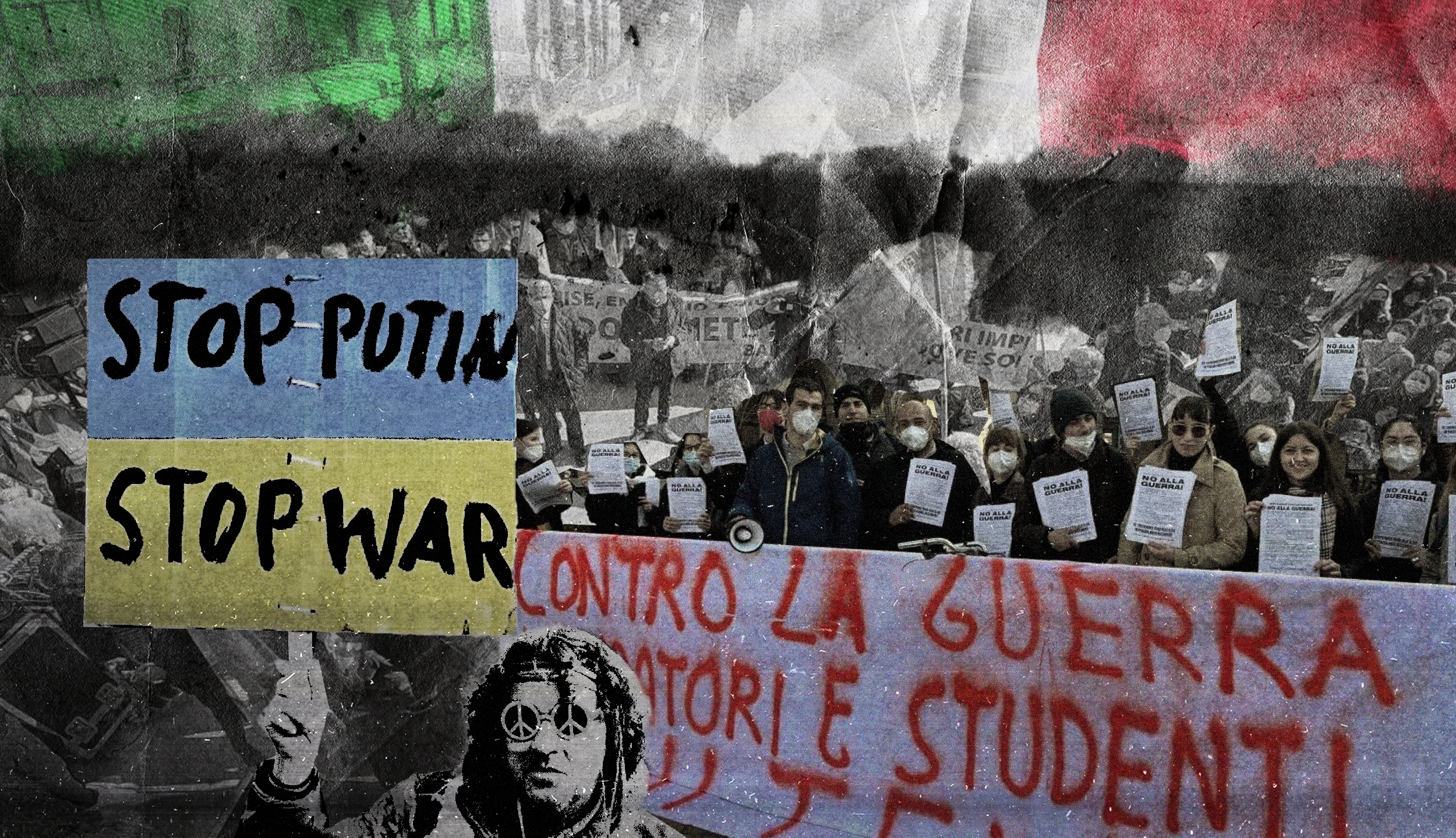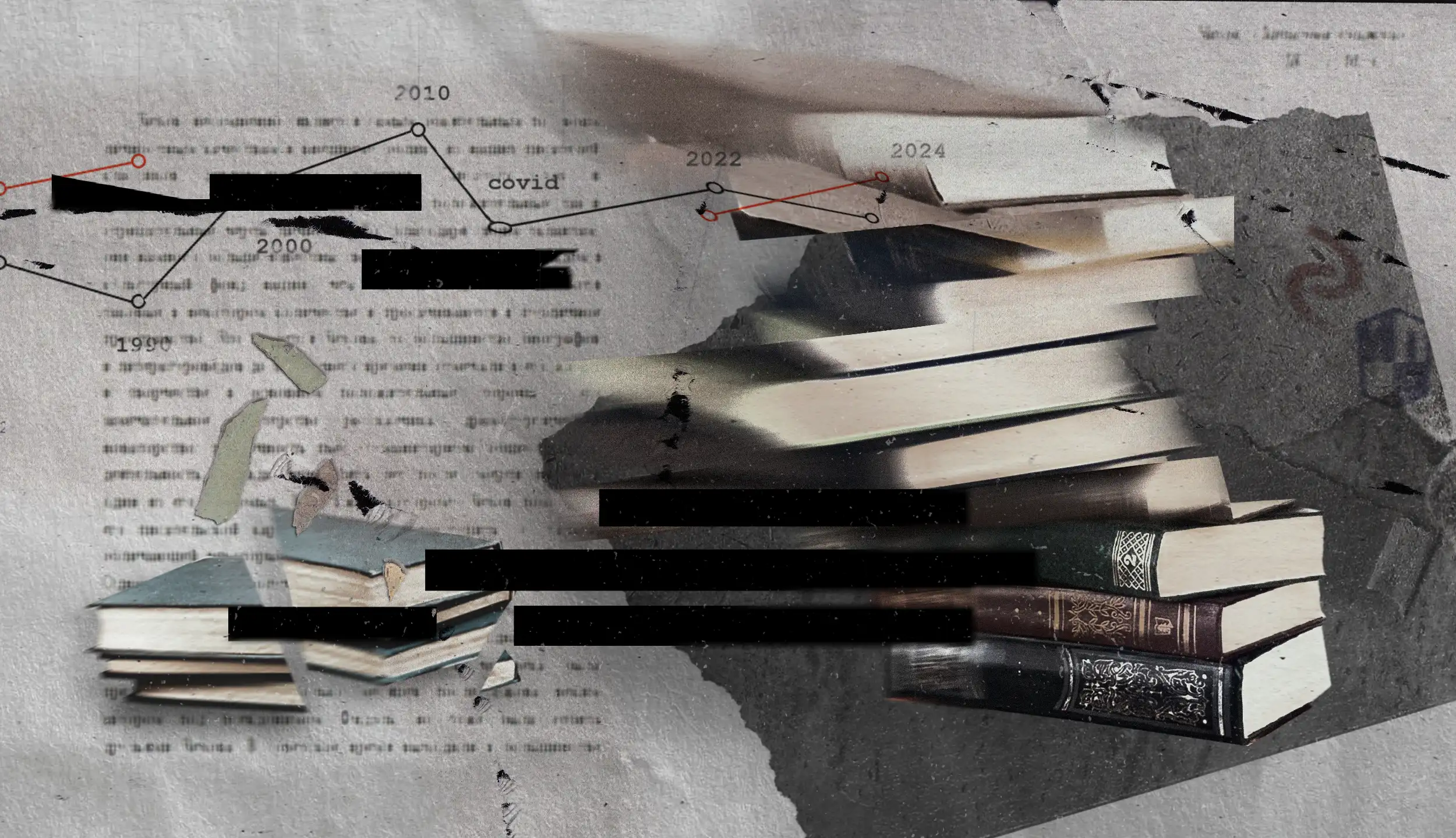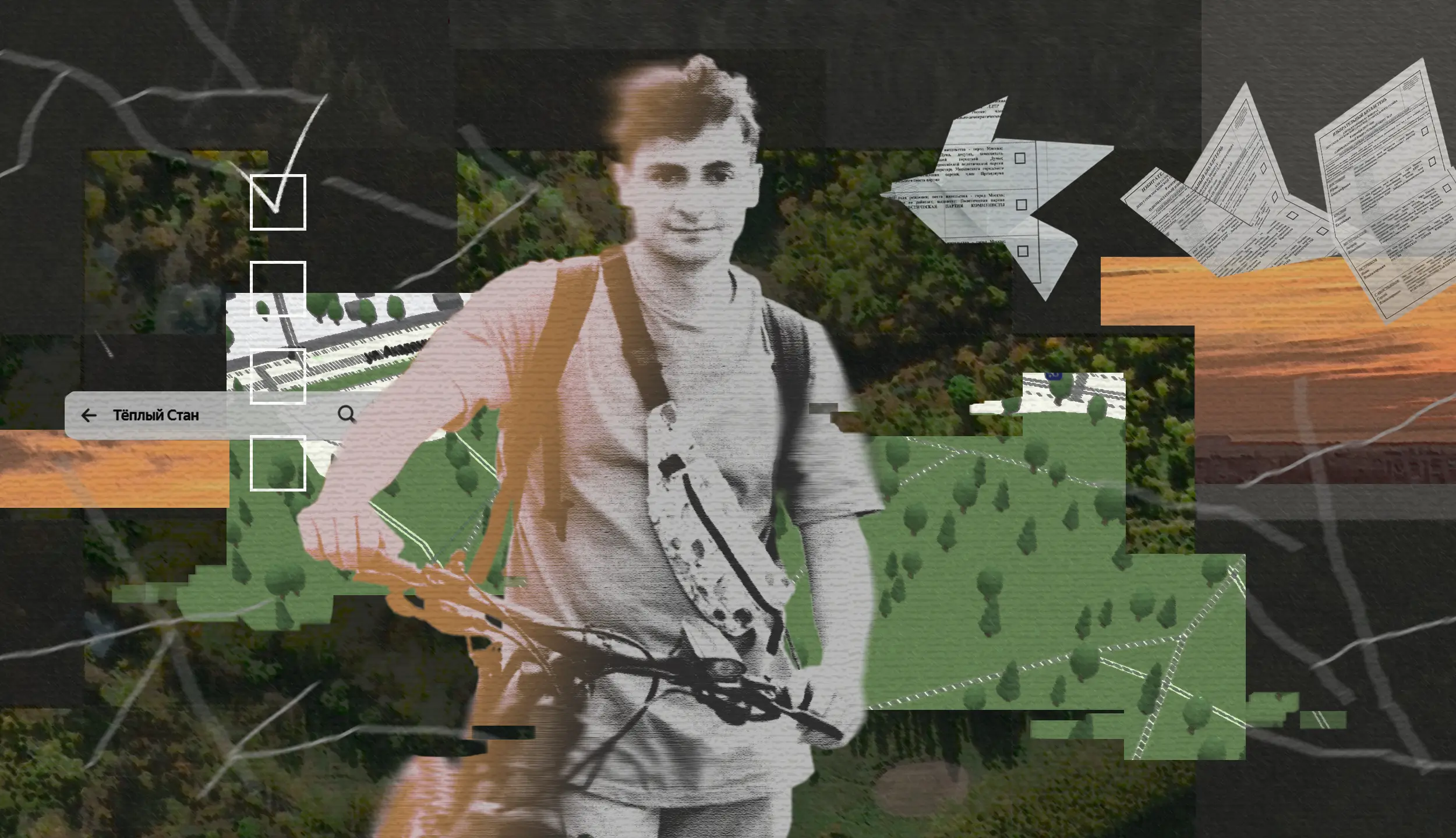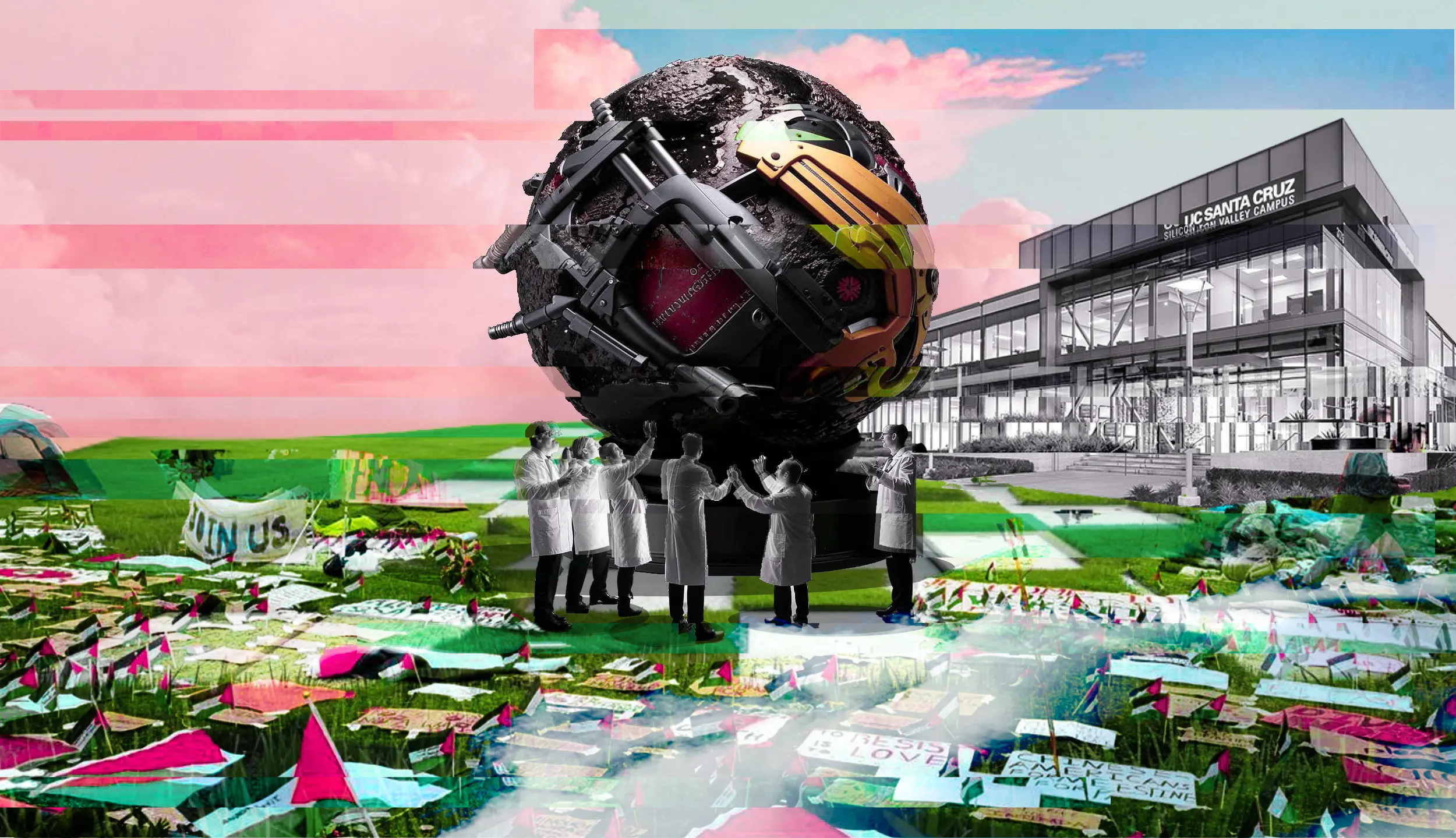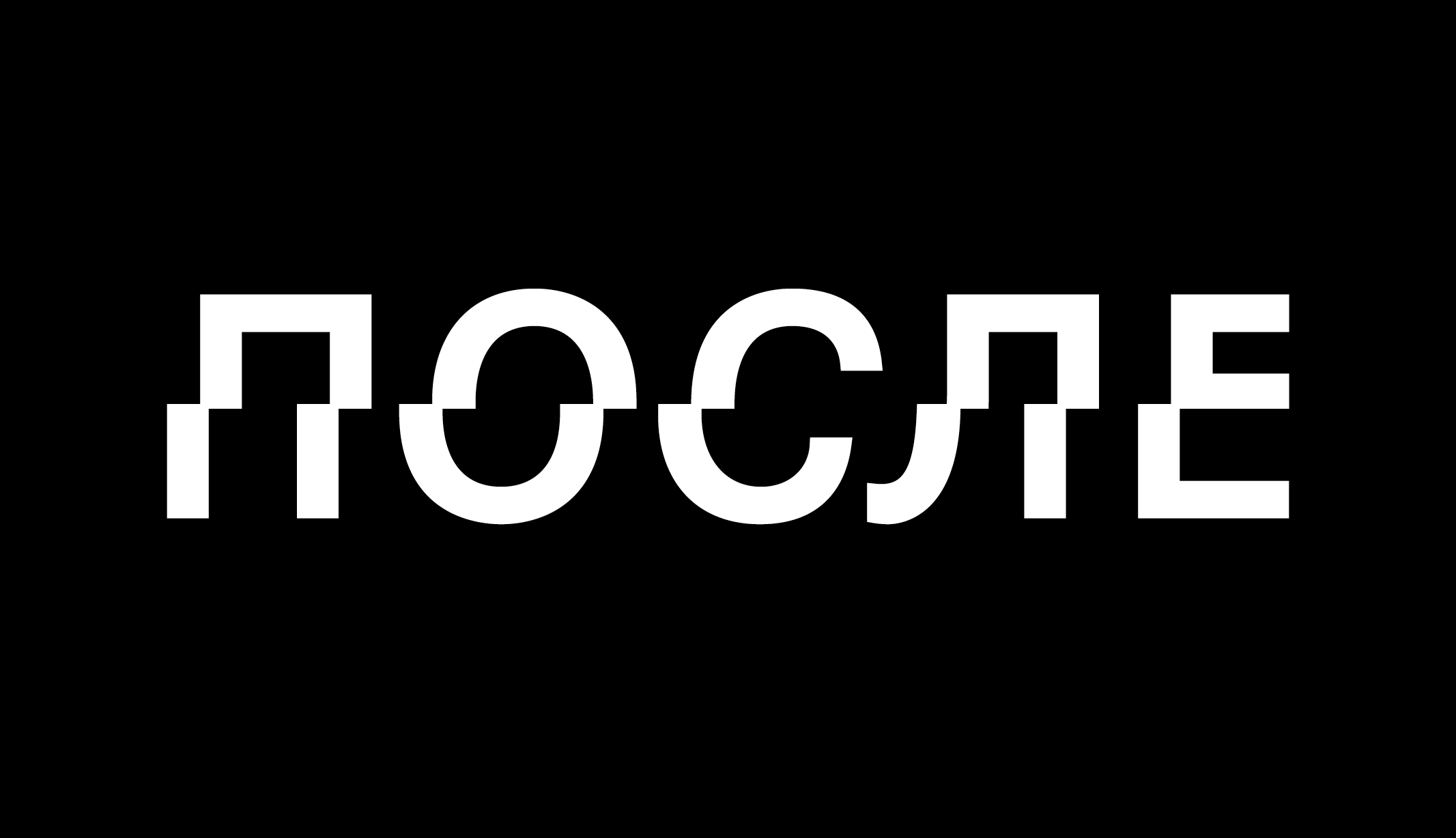It might sound exaggerated to say that Russia’s invasion of Ukraine calls into question the very core of the identity of the Italian left. Yet, after six months of war, discussions and divisions among left groups (and left parties) still persist and appear to be more fundamental than a contingent quarrel over specific issues. Despite this, no relevant public debate has actually taken shape, and discussions occur mainly on social media.
Following a sudden crisis in the Italian government, elections will be held on 25 September. The war has not been pivotal in the electoral campaign and debate, though it does represent a hidden dividing line between the candidates. The only left-wing party that openly supports Ukraine and the decision to provide weapons to the country is the Democratic Party (Partito Democratico). Many activists do not view the PD as a leftist party at all, given its neoliberal economic policies, its concern with the interests of entrepreneurs and businesses and the infamous “Memorandum” with Libya to cooperate in regulating migration that was signed in 2017.
Sinistra Italiana, a small party which, after some vacillation, entered — together with the Italian Greens — the coalition with the Democratic Party, condemned the Russian invasion unambiguously, but at the same time criticized Italy’s supply of weapons to Ukraine and called for negotiations to end the conflict. These positions are similar to those of Giuseppe Conte’s 5 Star Movement, the populist party that entered parliament in 2013. Their position on the war, together with the introduction of a form of basic income during Conte’s presidency of the organization, attracted some votes that usually go to the left.
Then there is the coalition Unione Popolare, which includes some parties from the “extra-parliamentary left”, such as Potere al Popolo and Rifondazione Comunista , that have come together to create an electoral force. The Union calls for a “total change” in Italy’s approach to the war. The country should stop supporting Ukraine, suspend sanctions and resume trade relations with Russia so as not to “make the working class pay for the economic crisis caused by the conflict”. In addition, there is a “red-brown” coalition called Italia Sovrana e Popolare: the touch of “red” is given by Marco Rizzo’s so-called Communist Party, which is linked to Zyuganov’s Communist Party of the Russian Federation, and some other candidates who come from a leftist milieu. Despite this, the party is basically sovranist and crypto-fascist, and fiercely backs Putin’s decision to invade Ukraine: among its candidates is the reporter Giorgio Bianchi, who was active in Donbass and who recently interviewed Maria Zakharova, director of information and press for the Russian ministry of foreign affairs.
Overall, although these epistemological labels should be taken with a pinch of salt, we can observe that the so-called “anti-globalists”, and to some extent the most radical populist movements, are very likely to believe and support the narrative that Russia invaded Ukraine for “defensive reasons”, mainly to counter “NATO expansion”, which is the most important thing, in their view, to oppose. These are the same groups that generally opposed vaccines and restriction measures during the COVID-19 emergency, and which were pretty active in the “No-Vax” or “No-Green Pass” demonstrations in Italy.
Pacifism in action (and not)
If we leave aside parties and the electoral campaign and look at leftist grassroots movements and groups, we can conclude that the situation is pretty much the same. Of course this is a pessimistic and intentionally harsh diagnosis, but let’s isolate one fact that symbolizes what’s going on: unlike in other European countries, so far there has been not a single demonstration at the Russian embassy in Rome to demand the withdrawal of troops or a ceasefire. This indicates that there is among the Italian left a certain hesitation (both conscious and unconscious) to take a stance that is primarily against the aggressor.
Anti-war demonstrations in Italy began immediately after the Russian invasion of Ukraine on 24 February. In fact, some sections of the pacifist and anti-capitalist movements took to the streets even earlier to warn against the risk of open conflict in the area. The two major initiatives of the peace movement against the war so far were held on 26 February in Milan and on 5 March in Rome. The organizers of the first march claimed that “the crisis in Ukraine, the tensions between Russia and NATO, risk creating a military escalation; it is important to support peace initiatives against the proliferation of weapons, a sector that has never been hit by a crisis, not even in the harshest moments of the pandemic. We call on everyone to implement dialogue to prevent weapons from prevailing.” Some 20,000 people gathered in Milan’s Piazza del Duomo, including between one and two thousand Ukrainians who, however, remained at the sides of the square with their flags and slogans, while the groups who had signed the appeal paraded in the square. The Ukrainians were not invited to speak from the platform.
On 5 March, a demonstration was held in Rome calling for a ceasefire. The appeal read: “We must stop the war in Ukraine. We must stop all wars in the world. We condemn the aggression and the war unleashed by Russia in Ukraine. We want a ceasefire; we demand the withdrawal of troops. We need the UN to act with authority and legitimacy and lead the negotiations between the parties. We call for a policy of disarmament and active neutrality. Political and diplomatic solutions must come from Italy and Europe.” Generally speaking, anti-war initiatives had these positions in common: a firm NO to sending weapons to Ukraine; the rejection of NATO expansion and rearmament (through increased military spending); calls for the Italian government and the European Union to take all kinds of diplomatic initiatives to bring about an end to the conflict.
Of course, these are not wrong demands per se but they clearly express a Western-centered, not to say NATO-centered, vision. Moreover, in the first months of the war a fairly animated discussion among the left debated whether the armed opposition of Ukrainians to the Russian troops could be legitimately termed “resistance”. It’s not by chance that at the very beginning of the invasion two of the most remarkable articles by Ukrainian scholars and activists (we are referring to Volodymyr Artiukh and Taras Bilous, the latter now serving in the Territorial Defense Unit) addressed “to the Western left”, complained about “US-plaining” or “West-plaining”. It has been and still is very common among Italian leftists to deny or downplay the agency of the Ukrainian population, often framing the current conflict as a “proxy war” between NATO and Russia (started by the former, usually, or at least “deliberately provoked” in recent years) or even calling the Ukrainian president a “US puppet”.
Of course there are some exceptions — social centers and collectives such as Làbas (Bologna) or Milano in Movimento (Milan) and small independent unions such as ADL Cobas (connected to the European network and to trade unions such as Solidaire or the Polish OZZIP), or NGOs like Mediterranea Saving Humans. These groups have made a point of getting in touch with Ukrainian civil society and the Ukrainian resistance, and have actively supported Ukrainian movements such as Sotsyalnyi Rukh, while some left-oriented websites and media outlets such as ValigiaBlu, Micromega, Jacobin-Italia, DINAMOpress, Storia e Storie Pordenone or Un’epidemia di vita have tried to give voice to leftists from Ukraine, Russia and Belarus and to shape their own perspective on the war in relation to them. Part of the feminist movement (including Non Una di Meno, one of the most lively, if not the most lively, grassroots movements in Italy) has been active in supporting Russian feminists against the war, although sometimes ignoring Ukrainian feminists or at least ignoring the fact that Russian feminists recognize Ukraine’s right to resist with arms. Similarly, most of the anarchist community — although they of course oppose Putin and his policies — have been very cautious about the presence of anarchists and anarchist groups in the Ukrainian resistance or in Russian and Belorussian movements against the war.
The legacy of communism in Italy
It would be wrong to say that these positions constitute the majority. After six months of conflict, and especially following Nancy Pelosi’s visit to Taiwan and the deal between Turkey and Sweden/Finland, which was very bad for the Kurdish community, the war in Ukraine understandably tends to be viewed in the global context of confrontations between superpowers, and of a general rearmament of European nations under a “war regime”. The specific aspects and features of the war in Ukraine are not usually considered; nor are the specific war crimes committed in the country, especially by Russian troops, or the nature of Putin’s power in Russia. These are “accepted” as part of a broader development of the “world-system”.
So, why is it like this? Of course we could give a lot of reasons — from a psychological explanation of the need to remove the fact that the Russian invasion of Ukraine represents for Europe one of the most dangerous international crisis since the Second World War, to the political fragmentation of leftist movements in Italy. However, an important point to consider is also the fact that during the Cold War Italy had the biggest Communist Party in Europe and, generally speaking, developments of leftist parties and leftist movements have been intertwined to various degrees with developments in the Soviet Union (which is sometimes, even today, wrongly identified simply with Russia).
Indeed, some of the major breaking points and splits in the history of the Italian left are linked to the invasion by Soviet troops of countries that were members of the Warsaw Pact (Hungary in 1956 and Czechoslovakia in 1968, for instance). It is always dangerous to draw historical parallels, but the 2022 Russian invasion of Ukraine cannot but resemble these events to some extent, at least in the “loyalty” displayed by some parts of the left that defend the “reasons” of the Russian élites. On the other hand, the violent and peculiar role that American intelligence played in Italy, especially during the so-called “strategia della tensione” (tension strategy) during the “years of lead” in the 1970s and up to the US invasions of Afghanistan and Iraq, foster a sense of “anti-Americanism” in the left, or at least a widespread skepticism every time the United States, CIA or NATO are in any way involved. In fact so-called “campism” was a prominent way of thinking among the Italian left during the Syrian crisis — in which some of the leftist groups backed Assad and refused to support Kurdish struggles in Rojava — or the 2014 conflict in Donbass where, as is widely known, some Italian groups backed the so-called “people’s republics” or even fought with their militias.
Alongside these events, especially during the 1970s, many new radical and working-class leftist movements from below in Italy developed their own agenda against labor ideology and factory discipline independently of the “socialist tradition”— although “revolutionary Marxism” remained the main and fundamental reference. They organized initiatives and struggles that were critical of the policies being advanced by the Communist Party and the trade unions. The Soviet Union ceased to be a model — it was no longer identified with the Soviet Union of the early years of the revolution. Social conflict also became widespread outside the smaller contexts of left organizations and took different and unexpected directions, leading to a systemic revolutionary attempt — not limited to specific or minor armed groups — to overthrow the “bourgeois foundations” of Italian democracy. This movement suffered a political defeat, due both to the repressive reaction of the state (supported by the Communist Party) and to its own social, political and organizational contradictions. These events, which of course have been brutally simplified here and the historical interpretation of which is still debated, represent an “open wound” in Italian society and the Italian leftist movement. It might be justifiable to say that they have produced a sort of “taboo” around violence as a means of class conflict and political confrontation.
Erasing the “Eastern perspective”
In addition, the collapse of the Soviet Union meant the end of the Communist Party (and partly, of the “communist-socialist dream”) here in Italy. During the 1990s the institutional left gradually embraced economic neoliberal policies and “capitalist realism”, and extra-parliamentary movements took their own path by exploring new alliances with different movements and groups from other parts of the world (notably, EZLN in Chiapas, liberation struggles in Palestine, the revolution in Rojava. But no one really addressed the major historical shift that was taking place beyond the Iron Curtain. Soviet dissidents were often dismissed as liberal or middle-class, in pretty much the same way that the so-called “Coloured Revolutions” taking place in the entire post-soviet space were dismissed, and no durable alliance or dialogue was built with any struggle or anti-capitalist subjectivity in Eastern Europe — the presence of some former communist parties from Eastern Europe in the European Left being an exception. As for the pacifist movement, the focus was mainly on the Balkan context, which actually led to the creation of lasting experiences and ties. Of course this is a generalization, but we may conclude that the so-called “post-Soviet space” (which Putin’s invasion has cruelly disrupted) became the most intimate and yet the most unknown and unexplored blind spot of Italian left identity.
All of this may have also produced a hidden sense of “West-supremacy” when it comes to judging and analyzing the legacy of the Soviet Union in our societies and the common understanding of Marxist thought. That is to say, points of view from Eastern Europe are often dismissed and diminished; they are reduced to the opinions of “the Other”, who doesn’t really have a clear understanding of what communism, socialism or even the left is (and should be). If we look at Italian society and the Italian political spectrum as a whole, it’s legitimate to say that “Russia”, especially Putin’s Russia, plays a special role in the collective unconscious. It has become a “floating signifier” both in right and leftist circles. Depending on the circumstances, it is seen as a synonym for “tradition”, “efficiently managed state and society”, “counter-Empire”, “leader of the multipolar world”, “guardian of orthodoxy”, “keeper of the legacy of communism” and so on. Critical analyses of Putin’s system of power have often been discarded or downplayed by the left, because they give the mainstream media a way of discrediting the “biggest enemy of the US” (not a completely false assumption, of course).
In general, we contend that until Putin’s full-scale invasion of Ukraine the Italian left lacked a common understanding of Russian authoritarianism, of the developments of capitalism and the oligarchic rule of power in Russia and elsewhere in Eastern Europe, of what it means to be antifascist in these countries and what kind of contradictions are found across Eastern European societies and Eastern European working classes. All of which also leads us to formulate some very concrete questions regarding the present: how many Ukrainian, Russian or Belorussian left intellectuals, activists or resisters have been asked for their opinion about the ongoing war, or have been invited to speak at events, not to mention to contribute to the drafting of a manifesto on the war? How many of them did we hear while Euromaidan and then the civil war in Donbass were taking place, how many during the 2020 revolts in Belarus or during Bloody January in Kazakhstan? Not many, and considering the very nature of this piece, the opposite seems to be the case: Russian dissidents are asking us to express our views about the Italian left — which is at the same time flattering and shameful.
Looking for another left
Of course, it is not all about alliances or about listening to comrades and people who are suffering the major consequences of the ongoing war — although these should be non-negotiable prerequisites to building our own perspective. We are probably not used to thinking inside a war-scenario that affects our lives. That is a hard pill to swallow and it must be recognized. It also explains why the interpretations that frame the invasion of Ukraine as a regional controversy over Donbass are so fascinating: they allow one to judge and think from a merely humanitarian point of view and “from outside the storm”, which is not the case, even though we, as Italians and West Europeans, have not been affected to any relevant extent so far. So again, we contend that the (relatively) “comfortable” zone in which we have lived during the last decades also prevented us from thinking about political issues that perhaps we took for granted: what is a “democracy” and how do we understand this term? How do we judge movements that “fight for democracy”? How do we imagine the “overcoming of the nation-state”, if we do actually imagine it, and what is our attitude towards a people’s self-determination? What is our understanding of imperialism in the current global scenario and how do we envisage a common security architecture on the global stage? What does a “leftist foreign policy” from below look like?
Sandro Mezzadra and Toni Negri, among the most prominent Italian leftist thinkers, recently wrote an article which, as we have said, refuses to deeply analyze the specific meaning of this war and rather calls for a struggle against the “global war regime”, speaking of the need to open a “fault line within the West.” Maybe right now what is needed is rather to open a “fault line” inside the left, and more specifically within the Italian left and its broken identity.
About the Authors
Elisabetta Michielin takes active part in the Rete Solidale Pordenone network for the defense of the rights of migrants and asylum seekers. She is also an editor of Pulplibri.it and a co-founder of Storiastoriepn.it.
Pietro Maestri is a social activist and editor of Jacobin Italy magazine.
Francesco Brusa is a freelance journalist collaborating with Osservatorio Balcani e Caucaso Transeuropa and DinamoPress.

